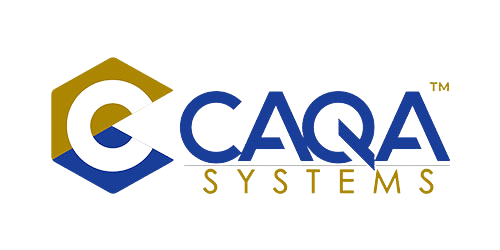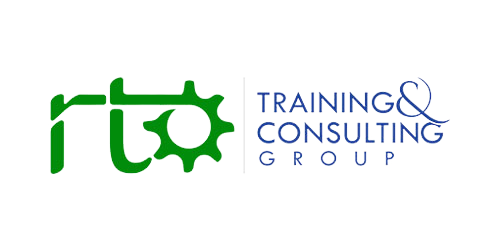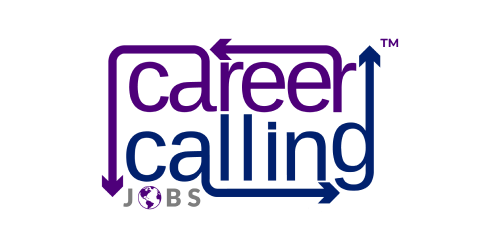Introduction
“Continuous improvement” has been repeated so often in strategy decks and staff town halls that it risks becoming a comfortable slogan rather than a living system. When it is reduced to an annual survey or a suggestion box, people inevitably lose faith; they give you their time and ideas, and the ideas disappear into a black hole. The organisations that genuinely improve—quarter after quarter, audit after audit—do something different. They treat improvement as a closed-loop discipline. They track every piece of input, however small, from intake to outcome. They make the right changes in the right order, guided by evidence. And they prove, with data and documentation that stand up to scrutiny, that the change made things better. In the Australian context—whether you answer to customers, boards, or regulators—the difference between a slogan and a system is the paper trail, the cadence, and the courage to publish results, including the misfires.
The foundation: what continuous improvement really is
Continuous improvement, or kaizen, emerged from manufacturing but now anchors high-performing services, healthcare systems, education providers and government agencies. Its core is deceptively simple. Improvement never ends, even when performance is already strong. Accountability is shared; leaders set direction and clear barriers, but every person is empowered to spot waste, surface risk and test ideas. And evidence rules; intentions matter far less than observable shifts in quality, safety, speed, cost and satisfaction. In regulated environments—such as Australian RTOs operating under ISO 9001 frameworks or ASQA oversight—those principles align naturally with the expectations of performance evaluation, corrective action and documented change. The mindset is cultural; the method is procedural.
Why feedback alone is not enough
Feedback is essential, but it is fuel, not an engine. Without a mechanism to convert raw feedback into prioritised interventions, monitored pilots and verified outcomes, the exercise breeds cynicism. Staff stop raising issues if nothing happens. Students, clients and customers stop responding to surveys if they never see a “you said, we did” outcome. The loop only closes when you can point, unambiguously, from a piece of input to a decision, to an owner, to an implemented change, to a trendline that moved. That clarity builds trust. It also deters performative busywork: if you have to show your working, you are much more likely to choose problems that matter and solutions that last.
Step 1: Map the reality you actually have
Every improvement program begins with an honest map. In Lean, you would “go to the gemba”; in Six Sigma, you might start with process mapping and SIPOC; in service design, you would capture journeys, pain points and moments of truth. The tool is less important than the posture. Walk the floor, sit with the call centre, shadow the enrolment officer, watch the assessor at work. Ask what really happens, not what the policy says should happen, and draw it. Visualising the flow exposes invisible workarounds, handoff delays, duplication and failure demand. It also surfaces constraints that no amount of motivational posters will shift, such as an outdated system or a policy that requires three signatures when one would do.
Step 2: Collect data with discipline, not just surveys
Treat feedback as a multi-source dataset. Blend survey responses with interviews, usability and usage analytics, complaint logs, audit nonconformities, defect tallies, turnaround times and benchmark snapshots. Make collection systematic by instrumenting core processes with regular measures rather than “when we get around to it” sampling. Make it contextual by tagging inputs to the point in the process where they occurred and to the outcome they affected. And make it transparent by giving teams access to shared dashboards so people can see the same reality and argue about the same numbers. When data flows to where the work is done, action rates rise because effort shifts from hunting for facts to solving problems.
Step 3: Track every item from intake to outcome
Tracking is the connective tissue of real improvement. It is the difference between “we’re listening” and “we fixed it.” Create a simple, standardised workflow for every suggestion, complaint or idea. Log who raised it and when. Classify it into a meaningful category that matches how your organisation manages risk and performance—compliance, customer experience, safety, cost, throughput. Assign an owner with authority to act, not just to observe. Record the current status and due date, and make that status visible to everyone who should see it. This work can live in modern tools—Jira, Asana, Trello, ServiceNow, a quality management system—or in a well-designed spreadsheet if you are small. What matters is that nothing falls through the cracks and that you can, at any time, produce an audit trail that shows the journey from input to decision to impact.
Step 4: act on the right things in the right order
Not all changes are equal. Limited time and money demand ruthless prioritisation. Resist the temptation to chase every squeaky wheel; use Pareto thinking to discover the few issues that drive the majority of pain. Use an impact–effort lens to secure early wins that build momentum without ignoring bigger fixes that require sustained investment. And, above all, attack causes rather than symptoms. Five Whys conversations, fishbone diagrams and critical incident reviews help teams move from “patch the hotspot” to “remove the source of heat.” In practice, that might mean retiring a legacy form that creates rework across six teams, or re-sequencing tasks in enrolment so that one quality check prevents dozens of downstream errors. The hallmark of strong action is that the noise drops and stays down.
Step 5: test changes like a scientist—PDCA in plain English
The Plan–Do–Check–Act cycle keeps you honest. Plan by writing down your hypothesis—what precisely you will change, what you expect to happen, and how you will measure it. Do by running a time-boxed pilot with a defined cohort or location so you can learn safely. Check by comparing results to baseline using measures that matter to customers, staff and the business. Act by standardising the change if it worked, iterating if it nearly worked, or abandoning it if it did not. PDCA protects scarce resources and teaches teams to think like investigators rather than firefighters. It also creates teachable stories you can share: “We thought X would reduce rework by 25%; it cut 18%; we learned that Y was a bigger lever; here is what we are doing next.”
Step 6: prove it—measure, document and communicate
If you cannot show the before and after, you have not improved; you have only been busy. Choose a small set of crisp indicators that fit the problem—cycle time, first-time-right rate, defect count, wait time, cost per case, satisfaction, complaints closed—then baseline them, move them, and keep them moved. Package the narrative in a way non-specialists can read at a glance: a single-page storyboard, a dashboard with annotations, a monthly “you said, we did” note that closes the loop with customers and staff. Include the improvements that failed. High-performing organisations treat near-misses and dead ends as assets; they bank the learning so the next team does not pay the same tuition twice.
Step 7: standardise and sustain so gains don’t slip
Improvements decay if you do not embed them. Update the standard operating procedure that governs the work. Re-train people at induction and in refreshers so the new way becomes muscle memory. Build the control into the system; for example, put mandatory fields and logic into the form rather than asking people to remember a rule. Schedule regular reviews—monthly huddles for frontline improvements, quarterly step-backs for larger changes—so drift is detected early. Sustainment is unglamorous, but it is where compounding returns are made. A 10% improvement once is nice; a 10% improvement that holds while you apply the next 10% is transformation.
Culture and accountability: the soil where CI grows
Tools do not create culture; leadership does. Executives and managers who ask for feedback but never act teach people to stay quiet. Leaders who publish their own improvement commitments, who invite scrutiny, who celebrate well-run experiments regardless of outcome, and who reward teams for making the work easier and better, not simply faster, create the conditions where CI thrives. The signal you send in performance reviews, promotions and recognition programs matters. If improvement is “extra” rather than part of the job, it will vanish when pressure rises. Make it part of role design, workload planning and career progression, and it will survive the crunch.
Digital transformation: from paper trails to living systems
Modern software has turned continuous improvement from a paper chase into a live system. Cloud-based collaboration lets dispersed teams capture ideas, attach evidence, tag root causes and watch status move in real time. Data pipelines feed dashboards without manual wrangling, revealing trends before they become crises. Customer-facing channels integrate with internal workflows so that a complaint raised on Monday can produce a change in a script by Wednesday and a measurable shift in satisfaction the following week. The technology does not do the thinking for you, but it does remove friction so people can spend their energy on analysis and design rather than on chasing updates through inboxes.
Proving value to stakeholders: the ROI of doing CI properly
In boardrooms and budget cycles, stories are not enough. Regulators must see compliance and remediation. Investors want evidence that improvement is not cosmetic but structural. Customers need to know that their voice produces change. That is why the “prove it” step is non-negotiable. Quantify the lift in throughput or the drop in error. Put a conservative dollar value on time saved and waste avoided. Tie improvements to risk reduction as well as to revenue and cost. Then keep publishing. Transparency builds trust externally and creates healthy internal competition; once teams can see which unit cut wait times by 46% and how, they copy rather than reinvent.
Continuous improvement in action: three short stories
In healthcare, an emergency department facing chronic overflows used a one-month sprint to map triage flow, instrument wait-time data and run two PDCA cycles. A single registrar reassignment and a new “fast lane” protocol for low-acuity cases cut average waits from an hour and a half to under three-quarters of an hour. The gains were tracked weekly, published to staff, and locked in by updating rosters and SOPs. In manufacturing, a plant team turned a vague complaint—“the line keeps stopping”—into a downtime taxonomy and timestamped log. They discovered three repeatable failure modes. Two low-cost spare kits and a short operator upskill reduced downtime by nearly a fifth and defects by more than a fifth within six months, with shifts presenting their data at weekly stand-ups. In education, a faculty wrestling with a clunky learning platform interviewed students and tutors, analysed click-paths and error logs, prioritised three root causes, and ran two-week changes between census and finals. Navigation fixes and content templates drove a one-third lift in engagement and halved negative tickets; the story—and the evidence—went out in a monthly “you said, we did” note that rebuilt trust.
Getting started or getting unstuck
You do not need a transformation program to begin. Pick one process, one team, one metric. Map it, measure it, fix one thing, prove it, and tell the story. Automate tracking as soon as you can, so nothing disappears. Thank and recognise people whose ideas become improvements; nothing grows a culture faster than seeing your contribution made visible. Build deliberate feedback loops into your comms cadence so stakeholders never wonder what became of their input. And accept that improvement is iterative; not every change will stick the first time. What matters is the rhythm—hypothesise, test, learn, standardise, repeat.
Common pitfalls and practical antidotes
Three traps derail most CI efforts. The first is collecting feedback without a tracking system; the cure is to install a simple register and make it visible. The second is failing to close the loop; the cure is to put “you said, we did” on a schedule and live up to it. The third is outsourcing improvement to a quality team; the cure is to write CI responsibilities into every role and measure leaders on the improvements they sponsor and sustain. In all three cases, the principle is the same: accountability plus transparency beats good intentions every time.
Conclusion
Continuous improvement is not a poster, a survey or a quarterly workshop. It is a disciplined way of working that converts scattered input into measurable, defensible, sustained gains. The organisations that excel at it don’t just collect feedback; they track it to the point of decision, they action the right changes in a way that addresses real causes, and they prove—to staff, customers, regulators and themselves—that the needle moved and stayed moved. In a volatile world, that loop is a competitive advantage and a civic responsibility. Build it well, and you will do more than keep up; you will set the standard others copy.
For further reading, explore foundational guides on the PDCA cycle, Lean and Six Sigma methodologies, idea and workflow management platforms, and the role of leadership in building a measurable improvement culture, including resources from Atlassian, ASQ and other recognised practice bodies.


































